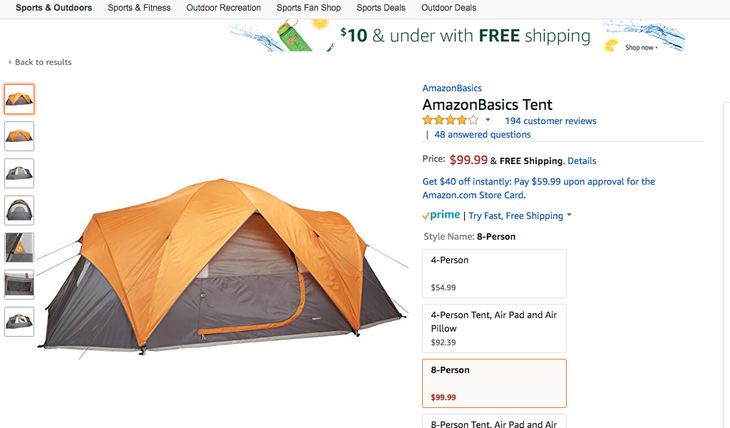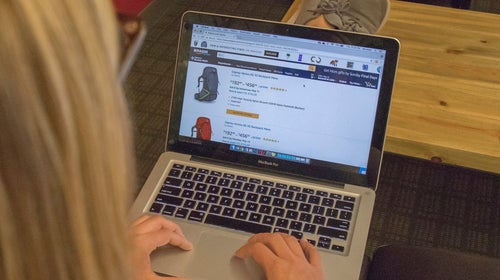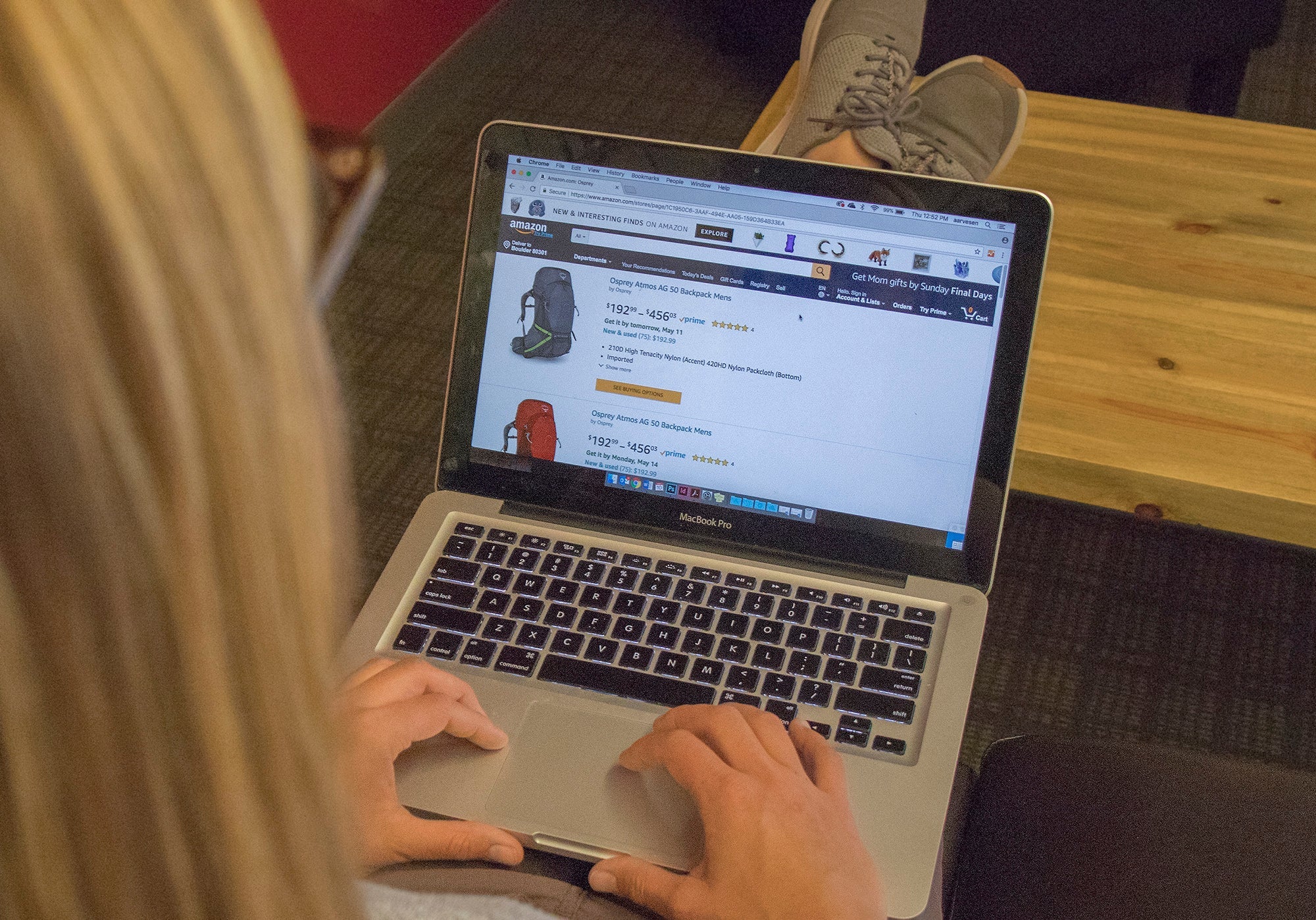The Challenge: Taming the Amazon Beast
For many in the outdoor industry, Amazon has become something of a dirty word. Yes, distributing through the ecommerce giant can grant access to a huge global customer base (plus help with fulfillments, customer service, and marketing). But it also opens vendors up to a host of issues, from loss of control over pricing to discounting wars among unauthorized resellers to the risk that Amazon itself will study sales data and build its own (cheaper) version of the gear.
The minefield begins in vendor central, the option in which brands distribute product directly through Amazon. Because Amazon makes no bones about its goal of providing the lowest possible price—“Amazon sets its retail prices independently and believes in delivering the best possible value to our customers,” a spokesperson said via email—the company sometimes ignores MAP policy. “MAP policies are only enforceable by their manufacturers,” said Christian Gennerman, VP of marketing and strategy at 180 Commerce, a consulting firm that specializes in Amazon strategy. “What happens is a lot of these manufacturers sell to Amazon and it becomes their number-one account. How do they say, ‘If you don’t follow MAP, we’re shutting you down’? It’s difficult to walk away from purchase orders.”
There’s always the option of going with third-party resellers on the Amazon Marketplace instead—but vendors that aren’t careful about policing them risk more pricing problems because Amazon incentivizes resellers to compete ruthlessly for the lowest price. “There’s constant pressure to undercut all the other people on the platform,” said Rich Hill, president of Grassroots Outdoor Alliance. “By nature, it tends to get into the death spiral of discounting. When you ignore it, it becomes the Thunderdome of retail—everybody in there with hatchets and spiked maces, nobody makes money.”
The Newest Threat: AmazonBasics
In recent years, a new threat has emerged: the AmazonBasics house brand coming out with comparable outdoor products, at much lower prices. The company has access to detailed sales data for everything listed on Amazon, which it can mine for hot sellers and use to create its own knockoffs—like a $55 internal-frame backpack or a $42, four-person tent. “They’re picking the products that are selling,” said Gennerman. “They can outbid you, and they can out price you. The reality is, they can sell this product at a loss in order to get the customer on board. They’re in it for the long haul.”

That kind of copycatting can affect a brand’s other, offline distribution channels, too, noted Kristin Carpenter-Ogden, founder of Verde Brand Communications and host of its Channel Mastery podcast: “What will make a retailer successful carrying your brand if Amazon comes out with a trekking pole that costs 50 bucks, but has the same features and benefits?”
Amazon, for its part, argues that the market is big enough to support a variety of options. “Customers come to Amazon for the wide selection of products we offer, and that includes a variety of different brands they know and love,” said a spokesperson via email. “There is room for many players in the categories where Amazon offers private label products, and products from vendors and third-party sellers continue to be bestsellers across various categories.”
And yet—“It’s not feasible for most brands to say no to Amazon,” Gennerman said. “Sixty-six percent of all searches for product originate on Amazon. If you’re not selling your product there, someone else is selling a product very similar to yours, or selling your product.”
The Fix
Deal with Amazon, but do it carefully by offering only a selection of your brand’s total line, and/or work only with a small number of trusted resellers in the Marketplace. Pay close attention to overall distribution to prevent unauthorized dealers from steeply discounting gear.
The Strategy
Make Amazon work for you instead of the other way around through careful distribution decisions and professional help.
>> Consider line segmentation One way to keep specialty retailers happy: Sell only some gear on Amazon. “The products that make sense for a budget-hunting consumer” might be the best fit, suggested Carpenter-Ogden. “That won’t cannibalize the high-end retailers.” But avoid trying to trick customers with a slightly tweaked, discounted version of an existing product, warned Hill. “The end consumer knows they’re being gamed,” and retailers could drop the brand as a result.
>> Be selective about partners The more third-party resellers you work with, the greater the chance for discounting to spin out of control or for unauthorized dealers to start selling gear, said Gennerman. He advises working with just one trusted reseller if possible. Side benefit: having fewer resellers makes it much easier to keep marketing messages and price consistent across all channels.
>> Get help Some consulting firms specialize in helping vendors come up with solid Amazon strategies, tell a consistent brand story, and track down unauthorized resellers and counterfeit gear.
>> Make MAP enforcement a job It’s easy for Amazon dealers to slash prices with abandon if nobody’s watching. Osprey Packs has one employee who spends two-thirds of her time policing MAP compliance, plus other watchdogs across different programs.
Case Study: Osprey Packs
One year ago this month, a shopper could find almost 200 sellers hawking Osprey gear on the Amazon Marketplace: 38 authorized dealers and up to 150 unauthorized ones, “selling our product at either full or discounted retail,” noted Bill Chandler, director of domestic sales at Osprey Packs. “It turned into a wild, wild West scenario,” with some of these shadowy resellers slashing prices up to 20 percent.
The company was well aware of the problem, but actually tamping it down remained a major challenge. Someone at Osprey would call some dealers whenever an off-price product popped up, “but it became a Whac-a-Mole game,” Chandler said. “When you have that many people playing in the arena, there’s only so many hours in the day you can devote to it.”
So Osprey decided to crack down. Some of the offenders were authorized brick-and-mortar partners who just weren’t cleared to sell on Amazon; in those cases, a direct phone call often fixed the problem. In other cases, it wasn’t clear who the resellers were or how they got the product, so employees did detective work to track them down and sent cease-and-desist letters. Osprey occasionally bought product online in order to track the sellers through their shipping addresses, and Chandler even personally knocked on a few doors after tracing unauthorized addresses to private homes (nobody ever answered).
But the real breakthrough came when Osprey started to reauthorize 100 percent of its U.S. dealer network. “Every dealer, no matter if they’ve been with the brand for 40 years or two years, had to reapply,” Chandler said. “So now I have a way to legally enforce our pricing policy.” Some longtime partners were irked, he noted: “Now that we’re trying to put on our big boy pants and be conscientious of the value of our brand at retail, [we’ve been] met with some challenges.” But explaining that the move was meant to protect the dealers’ full-price business usually smoothed things over.
Now, Osprey is down to just eight authorized third-party resellers on Amazon, all trusted, existing dealers with storefronts and a commitment to the brand’s unilateral pricing policy. Osprey’s leaders plan to see how this strategy plays out for at least six more months before deciding if they want to expand that number. For now, though, the brand feels a bit more in control of the former Amazon free-for-all, but knows there’s still work to do. “I don’t think our hands will ever touch,” Chandler said, “but we’d like to get our hands further around the ball than we currently have it.”


